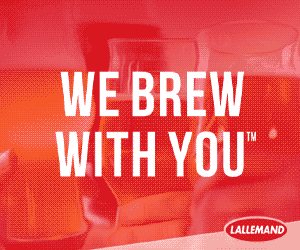The Subtleties of Beer Gas
Q: I read the article on serving stouts with beer gas on your website, and I’m hoping you have some insight into a situation I’m having. I recently added a beer gas line and a stout faucet to my home kegerator. I got a Keg of Belching Beaver Peanut Butter Milk Stout from a local store. The beer comes out very, very foamy during pouring, but the head disappears completely after a minute or two and then the beer is flat. In the aforementioned article, it describes a period of time for conditioning a keg on beer gas. I guess my primary question is: Is this step typical for a commercial keg or is that step normally only homebrew? Do all commercial kegs for nitro stouts need to be conditioned over a week like this? Any insights you have would be helpful and appreciated.
— Bobby Smallman • San Francisco, California
A: Years ago I was talking to a crusty dude named Larry who worked for a local beer distributor about the dirty draft beer tricks that can be played by competing distributors. Larry told me that he used to work for the local Coors distributor who also had Guinness in their portfolio. Larry would sell Guinness into his Coors accounts and then switch all of the beers at the account to “Guinness Gas,” a blend of 75% nitrogen/25% carbon dioxide that is also known as beer gas, to make things simpler for the account. Anything to make serving draft beer simpler is the sort of customer service that bar-owners love from their beer distributors and Larry knew how to make his draft accounts happy!

But Larry’s suggestion of simplicity was also his way to gain more business at his accounts because any slow-moving beer dispensed with beer gas will lose its carbonation over time and then customers complain of flat beer. Knowing that this would happen to some beer, Larry could later return and suggest a faster selling brand to take the tortoise’s place. He was one clever rascal.
Your description of what is happening to your keg of Belching Beaver Peanut Butter Stout fits into Larry’s gas trick. Belching Beaver Peanut Butter Stout is available in two versions. One is a normally carbonated beer and the other is nitrogenated. It sounds like you are using mixed gas to push normally carbonated beer through a stout faucet. The beer dictates the correct gas blend, equilibrium pressure, and temperature that fits the gas level set at the brewery. This one simple instruction, set the keg at the equilibrium temperature and pressure for the beer, is total Greek to most people who deal with draft beer. And even when the idea is not obtuse, no keg that I have ever seen comes with carbonation specs or a suggested serving pressure and temperature. This is totally crazy because the brewery sure as heck knows the carbonation or mixed gas level in their beer.
Let’s take a deeper dive into what may be happening in your keg of Belching Beaver Peanut Butter Stout. According to Belching Beaver’s website, this brand is available as a normally carbonated and a nitrogenated beer in bottles. For the sake of thorough discussion that can benefit all readers of BYO, I am going to assume that two versions are also available in kegs. When a carbonated beer is dispensed with carbon dioxide, the gas’ gauge pressure is usually about 12 psig (83 kpa) at 38 °F (3 °C). But when the same beer is dispensed with mixed gas at the same pressure, carbon dioxide in the beer moves into the headspace where the concentration of carbon dioxide is lower. Some nitrogen also moves from the headspace into the beer, but this is normally not obvious when the beer is poured. Over time, the beer in the keg begins to go flat, and the rate of change increases as the volume of beer in the keg decreases. Although this alone does not explain the initial foaming, it does explain the short-lived foam and may explain what is happening to your beer.
Since the earth’s atmosphere is 79% nitrogen and the nitrogen concentration in a bubble of nitro beer foam is typically 75%, there is no gradient “pulling” the gas out of the bubble.
So what happens when a normally carbonated beer, or a carbonated beer that is slowly being flattened with beer gas, is served through a stout faucet? They usually foam like crazy because stout faucets have a flat disc with five small holes (if based on the Guinness tap design) that is designed to cause gas breakout from the beer. Without this special plate, nitrogenated beers don’t do anything special when poured except produce a totally flat, and unexceptional looking pint. The very, very foamy pours you describe fit with how a carbonated beer poured through a stout faucet behaves. The short-lived foam is also consistent with this scenario because once most of the carbon dioxide has been stripped from the beer and the foam settles, there is not much gas left to keep the foam from collapsing.
Nitro beers, the flipside of this discussion, have very stable foam because the gas in the nitro beer bubbles is a mixture of nitrogen and carbon dioxide. Since the earth’s atmosphere is 79% nitrogen and the nitrogen concentration in a bubble of nitro beer foam is typically 75%, there is no gradient “pulling” the gas out of the bubble. This makes nitrogen foams very stable. They do eventually collapse as the liquid in the bubble wall thins due to gravity and surface tension effects, but this takes much, much longer compared to carbon dioxide bubbles.
My point thus far is that it is possible that you have a keg of carbonated beer that you are attempting to serve on nitro. And to directly answer your question about needing to wait some time to allow the beer to condition to the mixed gas atmosphere, the answer is “no.” When a keg of nitro beer is put on tap, all that is needed is about 30 psig (207 kpa) pressure to push the beer from the keg and a stout faucet. Furthermore, if you are starting with a normally carbonated beer, you cannot morph this brew into a nitro beer by simply hooking the keg up to mixed gas, increasing the pressure, and waiting for 1–2 weeks. The reason this method is not effective is because of the carbon dioxide in the beer; nitro beers contain a much lower carbon dioxide content than normal beers. In order to convert carbonated beer into nitro beer, carbon dioxide must be removed and nitrogen must be added. This topic is a deep rabbit hole that I am going to avoid entering. Suffice to say, removing carbon dioxide to the right level is not easy.
Whether you are tapping a keg of nitrogenated beer produced at home or purchased from a commercial brewery, the dispense method is the same. The basic, short-distant, direct draw, set up consists of a source of mixed gas (75% nitrogen/25% carbon dioxide), about 4–6 feet (1.2–1.8 m) of 3⁄16-in. (5 mm) beer line, a keg of beer stored at about 38 °F (3 °C), and a stout faucet. The standard-bearer for nitro beer is Guinness, because Guinness pioneered and perfected the technology. One of the interesting things about how stout faucets work is the need for velocity going into the tap. If nitro beer velocity is slowed by reducing the dispense pressure, gas break-out is reduced and the beer does not foam and cascade properly. For this reason, it is important to dispense nitro beers in the 30–35 psig (207–241 kpa) range. Not only does this pressure maintain the gas equilibrium established at the brewery, it provides the high velocity required by the faucet.
I will finish with a pragmatic suggestion. When all else fails, pick up the phone and call the brewery. I like asking simple questions and would begin with something like, “I just bought a keg of your peanut butter stout and want to make sure that I am using the correct gas pressure and temperature to match the gas specifications for your great beer.” It could be that you have a keg of beer that was not properly nitrogenated at the brewery, and that you are doing nothing wrong on your end. Cheers!


